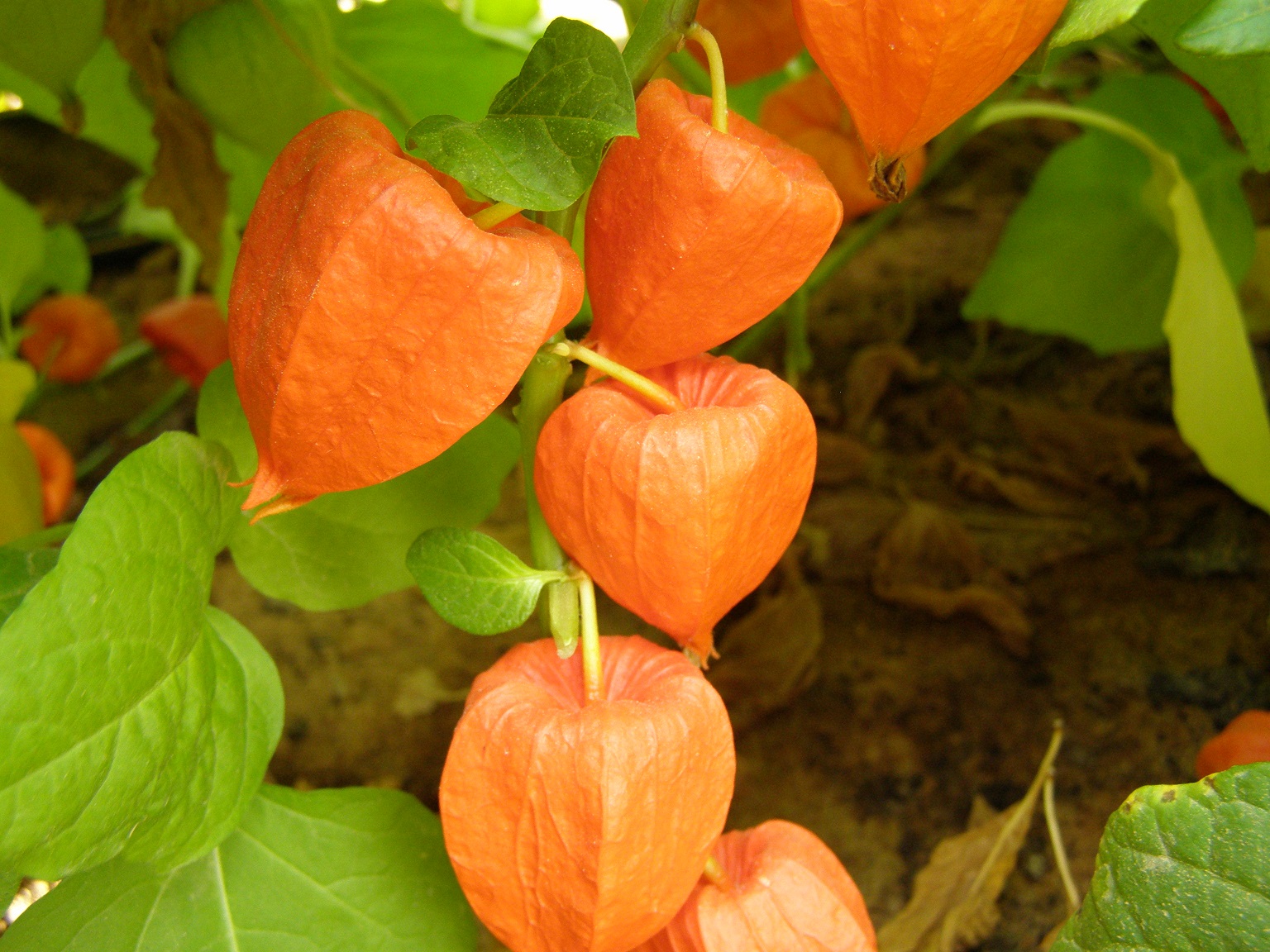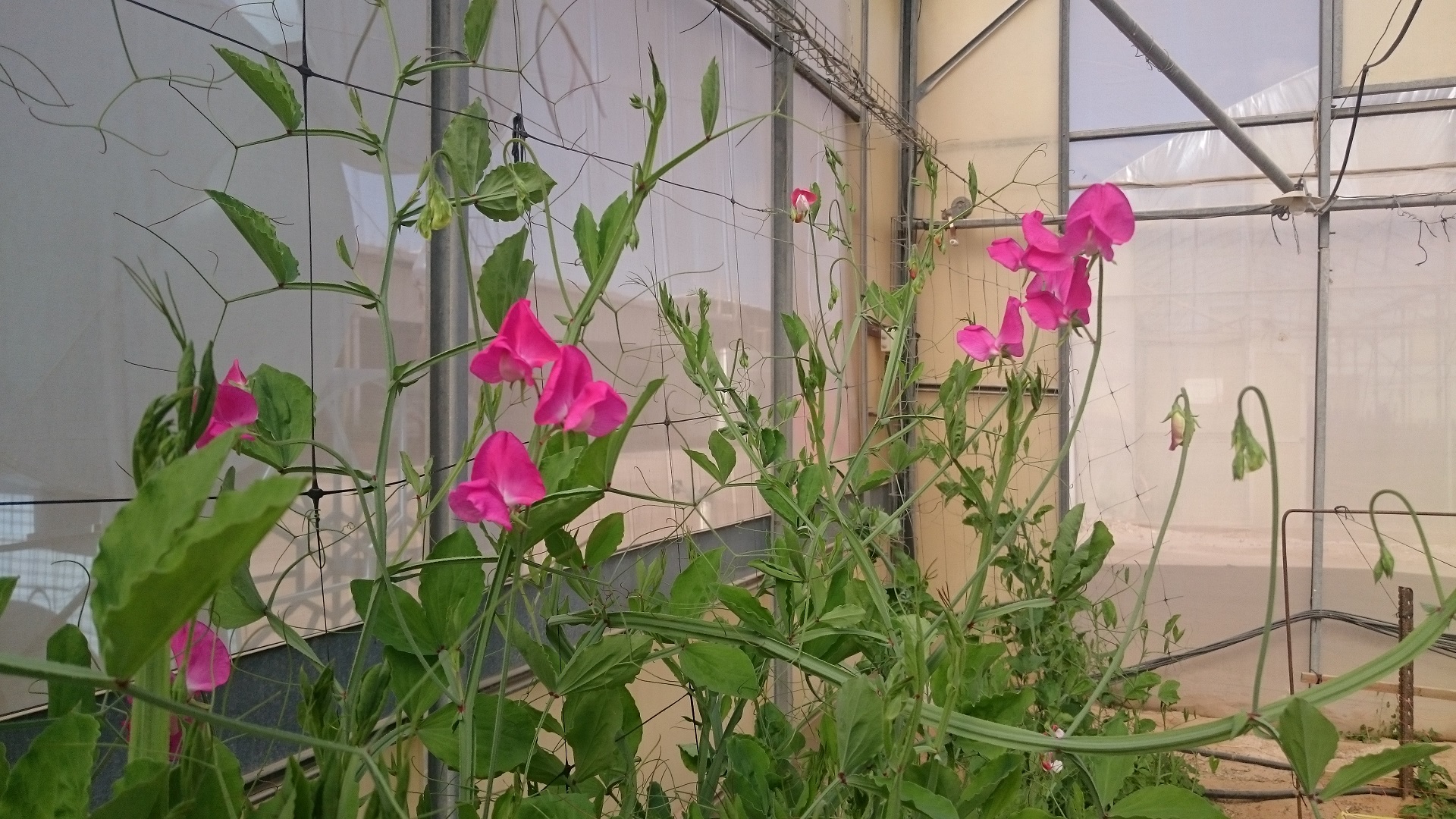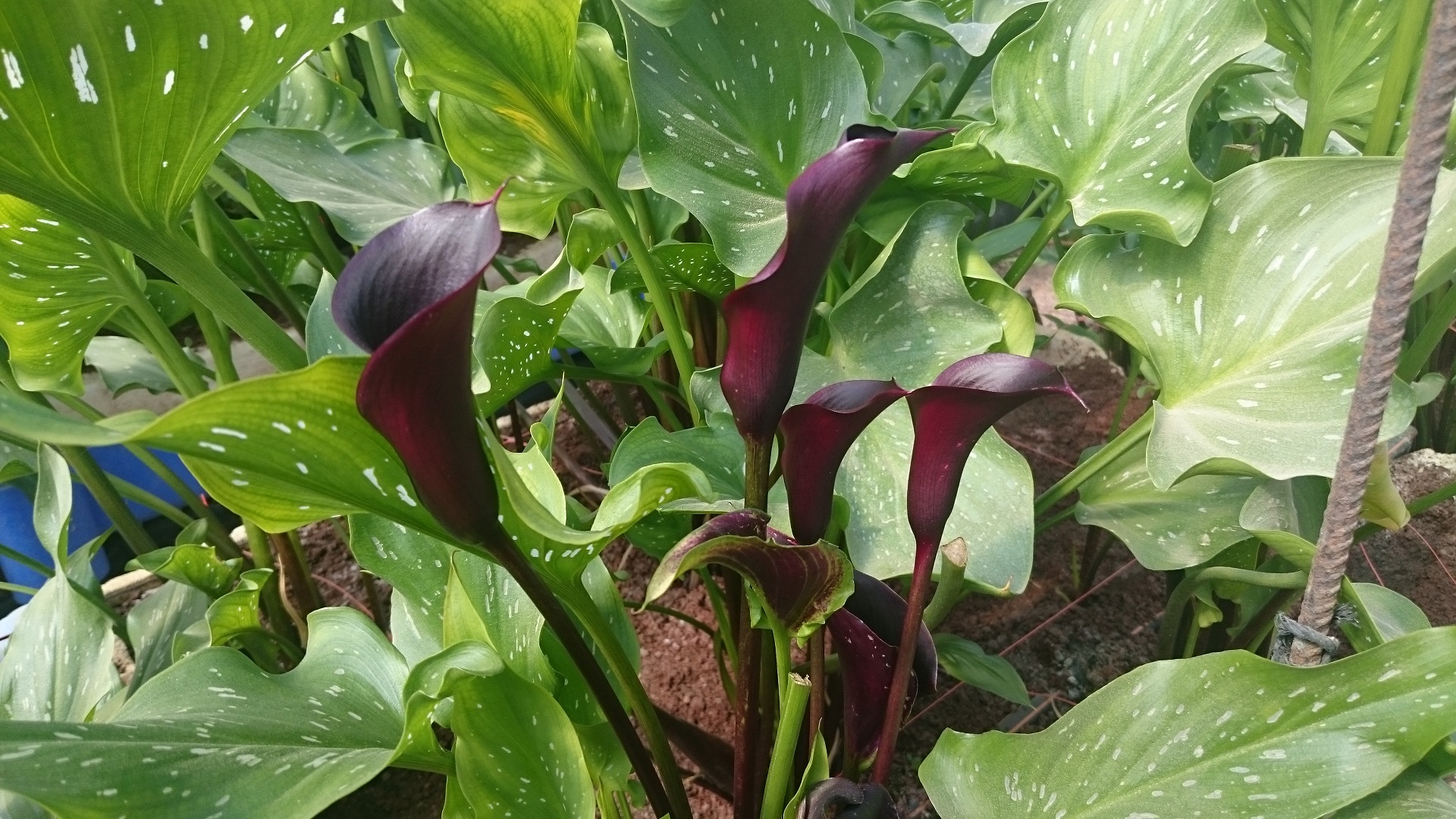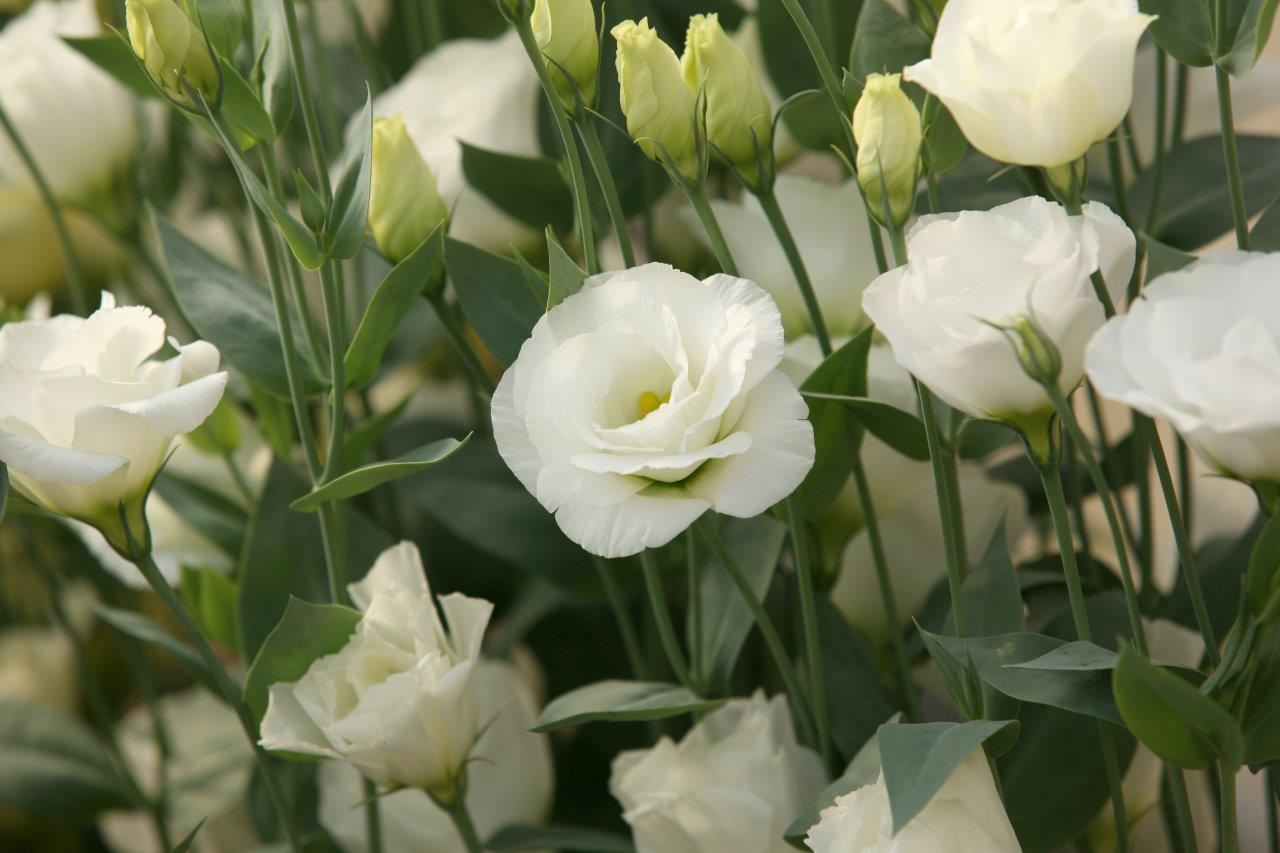Flowers
The research studies on flowers currently taking place on the Yair Station focus on improving existing crops and on acclimatization of new varieties of flowers
Agro-technology
Some of the flowers which grow in the Arava require additional light during the growing process. The Research and Development Unit is therefore looking into alternative types of lighting with low energy consumption and optimal length of use. Different techniques are also being examined in order to control flowering: refrigeration, cooling, shading with nets and use of growth regulators.
In addition, development of agro-technological solutions to reduce the spread of various diseases and to deal with pests continues.
Acclimatization of new species and varieties of flowers
In light of market analysis and in order to fulfill demand, the Research and Development Unit is cultivating new species and varieties of flowers together with existing crops, and is contributing to the diverse array of flowers growing in the Arava.
Each year experiments on all of the different varieties of flowers are conducted, in conjunction with various seed companies and nurseries.
We are additionally examining the feasibility of growing various different houseplants.
Management
Recent Reports
-
10monthsago
Gerbera Arava
Flowersתאריך עדכון 14/3/2008
תיאור מלא Gerbera (Gerbera hybrida) has been traditionally cultivated in Israel in the relatively humid and temperate coastal regions. During many years this crop was avoided in the Arava Valley due to the threats of the water salinity and the high temperatures, and the costly transportation. Following a successful venture in a private farm, a decision has been made to test the feasibility of Gerbera cultivation in Yair station. The examination was conducted during two seasons between 2005-7 in three growth media (soil, volcanic gravel (Touf), and Perlite), in both cooled and open greenhouse conditions, simultaneously. It has been concluded, that the Gerbera cultivation in the Arava has a significant relative advantage, especially during winter time. The yield quality and quantity were good with no heating requirements. Botrytis cinerea, which is a major pathogen of Gerbera cultivation in the coastal Plain, did not affect the winter crop in the Arava due to the low relative humidity of the region. Attempts to pass the summer failed, as many plants were affected by various soil diseases. The experimental work will continue the examination of Gerbera cultivation in the soil as well as in other growth media as an annual crop which should be replanted yearly.
שפה English
מחבר Maayan P. Kitron, Keren Elbaz, Avi Oshrowits, Dudu Elkayam, Nissim Pines, Amnon Navon
שנה 2008
שייכות yzvieli
תאריך יצירה 14/3/2008
תאריך עדכון 14/3/2008 -
13yearsago
The effects of different types of lighting on the flowering of Asclepias tuberosa
Flowersתחום או ענף אגרוטכנולוגיה; פרחים
תאריך עדכון 1/10/2011
תיאור מלא The effects of different types of lighting on the flowering of Asclepias tuberosa
Maayan Plaves Kitron, Eithan Shlomo, Katrina Krizova, Avi Usherovitz -
Central and Northern Arava R&D
Yair Nishri - Extension Service (SHA'AM), Ministry of Agriculture and Rural DevelopmentEmail for correspondence: maayank@arava.co.il
Asclepias tuberosa is a member of the Apocynaceae family. It is a perennial shrub native to South America. This plant grows in well-drained soils. It is also known as the butterfly plant because butterflies are attracted to its flowers due to their color and abundant nectar. A. tuberosa has been grown in Israel for a number of years. Production has been concentrated in the Negev, due to this plant’s sensitivity to low temperatures during the winter and its need for long days. This crop has been evaluated in the Arava in the past, but failed as a commercial crop. Since the development of new cropping technologies has led to both an increase in the amount of area planted to this crop in the Negev and good economic returns per unit area, we decided to once again evaluate this crop under the conditions present in the Arava, with the goal of increasing the variety of flowers exported from the Arava region.
The crop was evaluated during the 2008/9 and 2009/10 growing seasons at the Yair Research Station in the Arava under a number of different types of lighting- white light, fluorescent, low-intensity red LED, high-intensity red LED and blue LED. During the first season (first wave), we learned that day length is critical to this crop and that only bulbs that give off very intense light — white, fluorescent or red LED — encourage the induction of flowering in A. tuberosa. The best results in terms of the number of flowers harvested per meter were observed in the white-light treatment. However, the fluorescent-light and high-intensity LED treatments also had good yields. Quality measures were similar for all of the treatments, except for the control, which was inferior. We do not recommend the use of blue LED lighting. The results were not confirmed in the second wave, in which the yields in the blue LED and white-light treatments were low. Following the appearance of serious damage caused by a viral disease, we decided to stop the experiment. It appears to us that this study should be repeated with the addition of an appropriate treatment to prevent viral infection of the plants.שפה English
מלות מפתח cut flowers, light, LED (Light emitting diode).
מחבר Maayan Plaves Kitron, Eithan Shlomo, Katrina Krizova, Avi Usherovitz, Yair Nishri
שנה 2010
שייכות yzvieli
תאריך יצירה 1/10/2011
תאריך עדכון 14/3/2012 -
13yearsago
A new approach to flower production in the Arava : Improvement of sanitation and the quality and quantity of flower yields and significant reductions in production costs for Trachelium, Solidago and Lisianthus Trachelium, Solidago and Lisianthus
Flowersתחום או ענף פרחים
תאריך עדכון 1/10/2011תיאור מלא A new approach to flower production in the Arava: Improvement of sanitation and the quality and quantity of flower yields and significant reductions in production costs for Trachelium, Solidago and Lisianthus
Maayan Plaves Kitron, Eithan Shlomo, Katrina Krizova, Avi Usherovitz - Central and Northern Arava R&D
Michel Zaacai – Ben-Gurion University.
Yair Nishri - Extension Service (SHA'AM) Ministry of Agriculture and Rural DevelopmentEmail for correspondence: maayank@arava.co.il
Keywords: Cut flowers, polyethylene, Trachelium, Solidago, Lisianthus.
Cut flowers account for an important portion of the Arava’s crops and are a source of income for local growers. Thanks to the unique environmental conditions found in the Arava, different types of cut flowers are grown in this area. Among these, sunflower, Trachelium, statice (Limonium) and lisianthus stand out. The excellent local growing conditions lend themselves to the production of high-quality flowers, mostly during the periods of high market demand. However, there are still many difficulties related to the uncompromising demands of the European and world markets for flowers that are free of any damage from pests. During the summer and fall, it is desirable and recommended to grow Trachelium, Solidago and other flowers under shade coverings appropriate for the particular crop. In November, as the days get shorter and temperatures drop, this netting is removed and the cropping structures are covered with polyethylene, which is left in place through March. In April, as the days get longer and temperatures rise, this polyethylene is removed and shade netting is once again spread over the structures.
In an experiment conducted at the Yair Research Station during the 2009-2010 season, we evaluated Trachelium, Solidago and lisianthus crops grown under 50-mesh netting. Some of the tunnels were also covered with polyethylene. The plants in the control tunnels were grown as is customary; plants were transplanted under shade netting and the cropping structures were later covered with polyethylene. The results of this study indicate that the three crops grew well when they were covered only by 50-mesh shade netting and that the addition of a polyethylene covering to the insect netting negatively affected the yield and yield quality of Trachelium, but improved lisianthus and Solidago yields.Acknowledgements
We thank the Lev Tov Nursery for supplying us with the Solidago seedlings.שפה English
מלות מפתח Cut flowers, polyethylene, Trachelium, Solidago, Lisianthus
מחבר Maayan Plaves Kitron, Eithan Shlomo, Katrina Krizova, Avi Usherovitz, Michel Zaacai, Yair Nishri
שנה 2010
שייכות yzvieli
תאריך יצירה 1/10/2011
תאריך עדכון 1/10/2011











